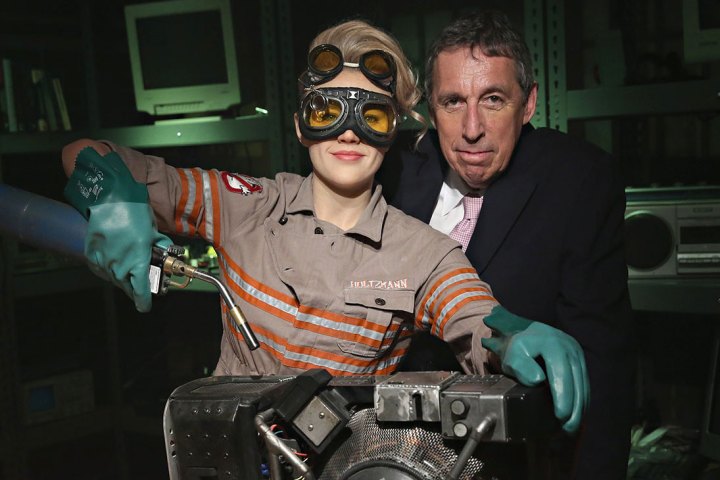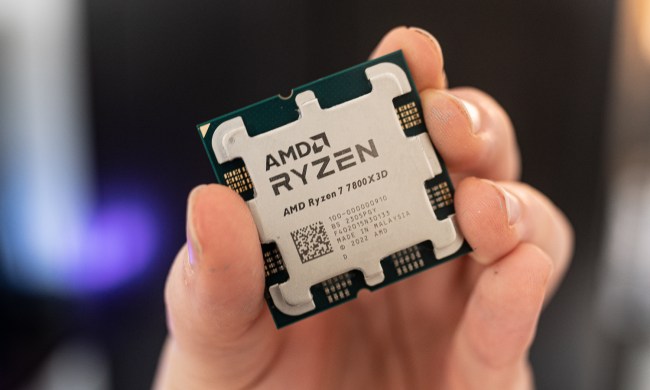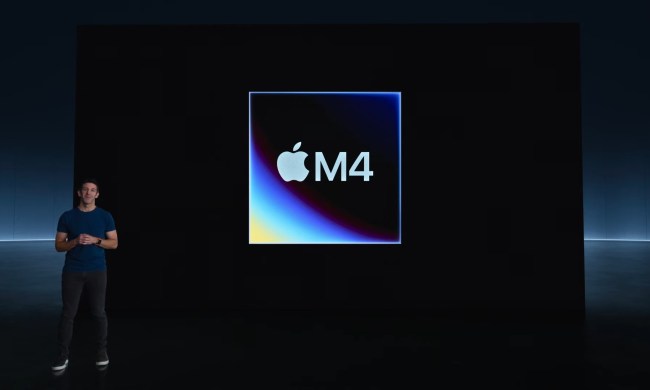
Ivan Reitman has been waiting an eternity – 27 years – for a new Ghostbusters movie, just like the rest of us.
He just happened to be part of the bottleneck, a complex contract that gave Reitman, Bill Murray, Dan Akroyd, and Harold Ramis veto power over any sequels. The launch of the all-female Ghostbusters reboot on July 15 is part of a new strategy by Reitman, who now oversees the Ghostbusters empire through the Ghost Corps production company with Sony Pictures.
The goal is to deliver new ghost-busting experiences, characters and locales to fans on a regular basis. It’s a plan that reaches beyond cinema, or even television. Virtual reality and video games are an important part of the franchise’s future.
Now that the new film’s mostly positive reviews are helping ease the negativity that made the new film’s trailer the most disliked in the history of YouTube, Reitman’s focus is on moving things forward. While some projects won’t be revealed until after the new movie’s opening, the director of the first two films, and executive producer of the third, can’t hide his enthusiasm about virtual reality and PlayStation VR in this exclusive interview.
Digital Trends: What’s the challenge of trying to stand out from the original Ghostbusters, which is considered such a timeless classic by so many people?
Ivan Reitman: It’s a complement to the first movie, which is so beloved. I ran into it with my own sequel five years after the first one came out. It’s only gotten harder as the love of the first film has increased. Whenever you bring in new characters and start all over, it puts a lot of responsibility on the writers and the director to do something that the audience doesn’t feel is a rip-off of any kind, yet is true to the spirit of the original.
There’s been a big push, from President Obama on down, to encourage girls to get involved in STEM (science, technology, engineering, and math) subjects early to fill the void in those fields. What impact do you think the characters in Ghostbusters will have?
One of the cool things about this latest Ghostbusters iteration is that all four women are great role models — even though sometimes they’re silly and vulgar. In the 1984 Ghostbusters we had a similar dynamic. Yes, they could be sarcastic and funny, but you realized these guys are the smartest people in the room. You looked up to them and wanted to hang out with them. And we feel that way about the women of Ghostbusters here. Instead of dealing with the clichés of womanhood, we see them as strong and smart. Having gone to school and gained all of this scientific knowledge, they’re inventing all of these cool gadgets and things. It’s a very positive message.
What role do the Activision Ghostbusters console and mobile games, and the Dave & Buster’s arcade game, play in connecting with younger gamers who didn’t see the original film in theaters?
The idea of capturing ghosts and fighting ghosts is an appropriate VR opportunity.
Games are an important part of expanding the whole Ghostbusters universe — even though it’s cliché to say that. But look at Marvel Comics’ success – and to a lesser degree DC Comics’ success. These are all intelligent steps to take to help insure that a franchise can grow.
What new avenues do you think are explored by The Void’s Ghostbusters: Dimensions VR experience?
It’s the one thing I had the most personal involvement in. Virtual reality is a remarkable new tool for storytellers. It’s like the discovery of film itself — and when sound was added to film — where the rules had to be changed to figure out how to tell a story. VR through The Void, in particular, is an extraordinary new opportunity for me as a film director and producer. I immediately wanted to start thinking about how to use this.
How does VR compare, and contrast, to filmmaking?
The language is very different. Film is an objective medium where you have the audience watching something take place in front of them. As immersive as 3D movies are, it’s still objective.

With The Void, the player is affecting the story. The question is whether there’s a longer form version of VR. Is there a way to tell stories through this medium and have viewers effect the unfolding of the story? I looked at this a year ago when I became aware of the evolution and revolution of VR, and got quite involved with The Void Ghostbusters experience that we have in this trial venue at Madame Tussauds, in New York’s Times Square.
How do you see Sony PlayStation VR opening up opportunities for Ghostbusters VR games and experiences in homes, given that there are over 40 million PlayStation 4s in the world today?
I’ve already spoken with the PlayStation people and to the department here at Sony Pictures that works in VR about how we can explore this. What kind of thing can we create that takes advantage of this opportunity of having millions of consoles in homes around world, and how do we expand the group of characters that we have? The idea of capturing ghosts and fighting ghosts is an appropriate VR opportunity.
The Void’s personal desire is to set up its own venues all over the world. It doesn’t take a huge footprint. And they can create their own exhibition chain. So we could multiply the Ghostbusters experience all over the place. But I love the idea of going into millions of homes as something that can be sold there and experienced by much larger group of people.






